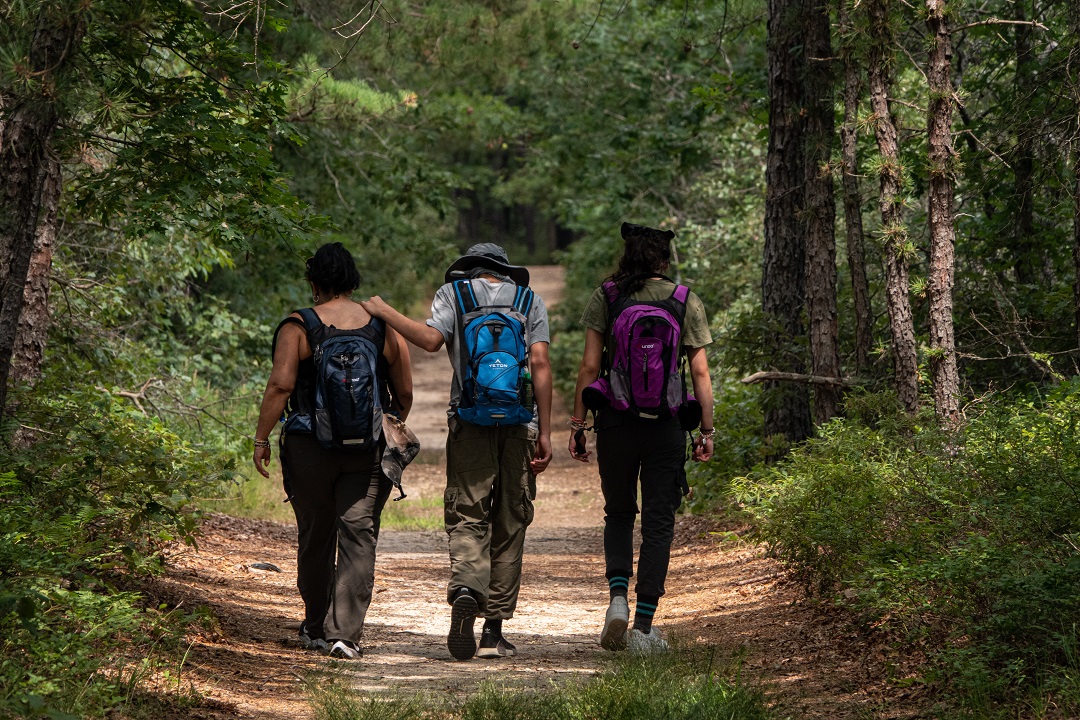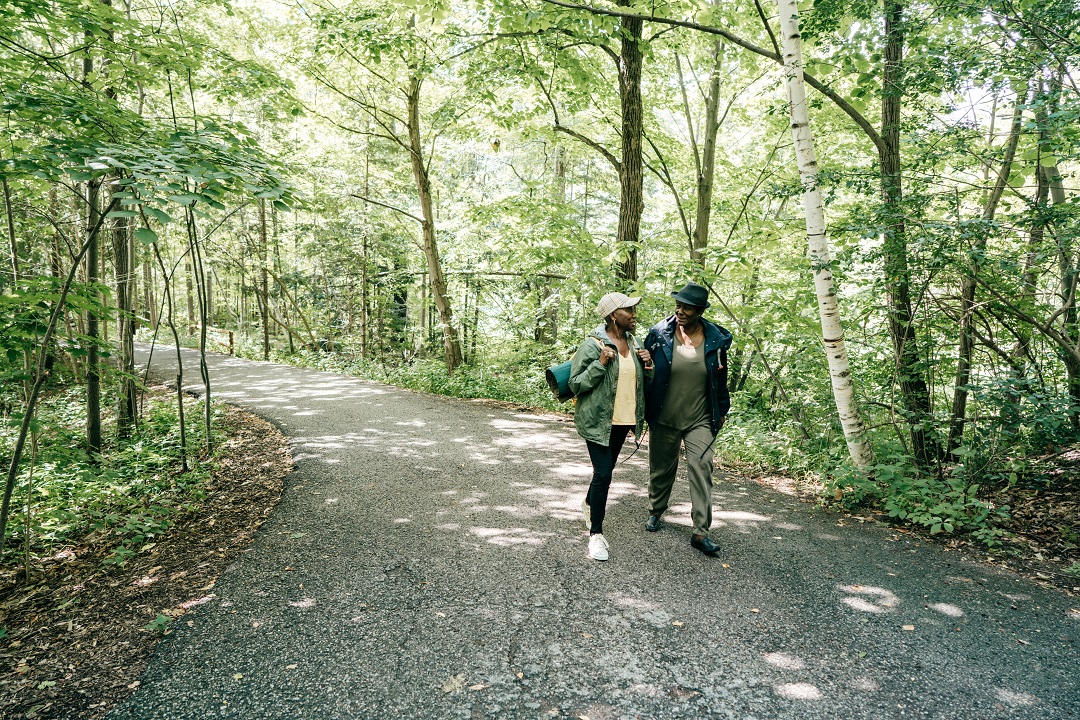Many of us hike for the same reasons: the stunning vistas, the sounds of the wild, the fresh air, the oneness with nature. But there’s a benefit that might not be top of mind: your health. Here are just a few of the health issues and benefits realized by hitting the trail.
Heart Disease
Heart disease is the leading cause of death for men, women, and people of most racial and ethnic groups in the US, according to the Centers for Disease Control (CDC), with about 659,000 of us dying from heart disease each year. Put another way, that’s one in every four deaths in the US.
Overwhelming research shows that individuals can significantly reduce their chances for heart problems through exercise, while those who do not exercise are twice as likely to have coronary heart disease.
Hypertension
Your risk of high blood pressure (hypertension) increases with age, but getting some exercise can make a substantial difference. You don’t need to summit Mount Everest or hike the Appalachian Trail. According to the Mayo Clinic, you should try to get at least 150 minutes of moderate aerobic activity or 75 minutes of vigorous aerobic activity a week, or a combination of the two. That’s just a 2.5-hour hike, even on flat terrain.
Diabetes
According to the CDC, more than one in every 10 adults 20 years or older has diabetes. For seniors (65 years and older), that figure rises to more than one in four. And as many as 8.1 million Americans may be undiagnosed and unaware they have diabetes.
A 2007 study published by the American Diabetes Association found that people who walked just about 20 minutes a day had a 30-percent lower risk of developing type 2 diabetes compared to those who did almost no walking at all.
Again, we’re not suggesting a thru-hike of the Pacific Crest Trail. A 20-minute walk around the neighborhood three times a week with a longer hike in the woods on the weekend would be a tremendous help to avoiding or overcoming type 2 diabetes.
Obesity
In the US, more than 93 million individuals are affected by obesity, according to the American Society for Metabolic and Bariatric Surgery Foundation, which can decrease an individual’s life expectancy by seven to 14 years and increases the risk of developing life-threatening conditions.
Hiking is a relatively low impact but powerful cardio workout. On average, a person burns 100 calories for every mile walked. You’ll burn about 200 to 250 calories per hour if walking at a rate of 2.5 mph, which equals a 24-minute mile. If you up the pace a bit, you can burn about 500 calories per hour if you’re hiking at a rate of 4.5 mph. That’s just over a 13-minute mile.

Muscle Development
Hiking builds strength in your glutes, quadriceps, hamstrings, calves, abs, and the muscles in your hips and lower legs. In addition, hiking strengthens your core and can give relief from back pain, which is often a symptom of weak core muscle.
Using different degrees of incline or decline will engage different muscle groups. If you’re wearing a backpack of any size or weight, you’ll be working back and shoulder muscles, too, and the use of hiking poles will include your shoulder and arm muscles.
Remember that rest is an important part of exercising and hiking. Giving those legs a good rest between outings will help build that muscle.
Mental Health and Anxiety
Spending time in nature reduces stress, calms anxiety, and can lead to a lower risk of depression, according to a Stanford University-led study. According to the study, urban dwellers have a 20-percent higher risk of anxiety disorders and a 40-percent higher risk of mood disorders as compared to people in the countryside. People born and raised in cities are twice as likely to develop schizophrenia.
Results of a different study showed immediate decreases in tension and anxiety after hiking, regardless of how fast or slow the participants walked. Add to this the fact that endorphins released by your body during a hike can lift your spirits and keep them there throughout the day and night, keeping your brain as healthy as your body.
Osteoporosis and Arthritis
As you age, your bones begin to weaken. You can effectively combat the effects of aging on your bones by incorporating hiking into your lifestyle. Hiking is a type of weight-bearing exercise that will require your bones and muscles to work harder for your body to function against gravity. Over time, this will help your body maintain and improve bone density. Hiking will allow your bones to function properly even as you age.
Cancer
Research in the field of exercise oncology (the study of cancer) shows that staying physically active improves symptoms and side effects during cancer treatment. In addition, exercise reduces the risk for some cancers and lowers the odds of dying if you’re diagnosed with certain forms of the disease, according to WebMD.
When it comes to cancer prevention, new studies strongly suggest that exercise lowers the risk for seven forms of cancer: bladder, breast, colon, endometrial, esophageal, kidney, and stomach. WebMD went on to claim that exercise such as hiking can help prevent lung, blood, head and neck, ovarian, pancreatic, and prostate cancers.
We’ve just scratched the surface of the health benefits of hiking. Experts add these items to our short list: improved sleep, better cognitive function, lower LDL (“bad” cholesterol), better balance, increased vitamin D from the sun, improved endurance and stamina, enhanced creative problem solving, and the prevention of dementia and cognitive impairment.
So, if you don’t hike for the many amazing experiences in nature, maybe you want to hike for your health. Happy, and healthy, trails.
Author: Morgan Paar is a regular contributor to Terrain Magazine.


Leave A Comment